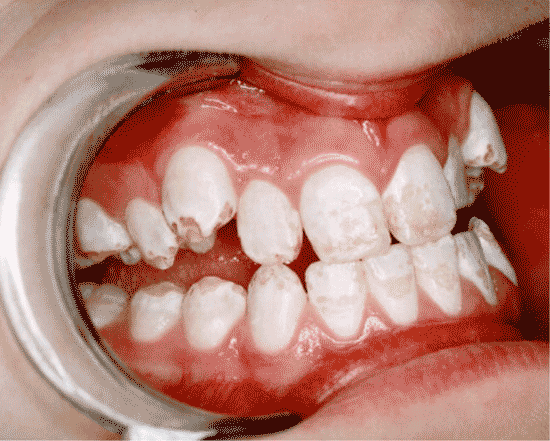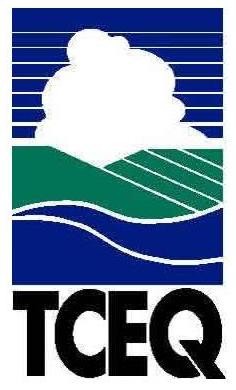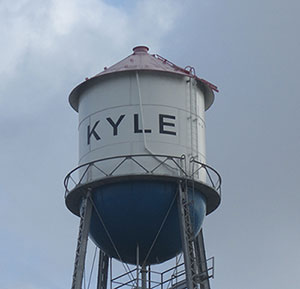FAN Investigation Finds Texas Regulators Failed to Notify Residents of Toxic Fluoride Levels
– Press Release
– US Water Systems with High F Levels
Introduction
After the events in Flint, Michigan, one question has been asked with increasing frequency: Is my drinking water safe?
Residents across the state of Texas have been left asking this question following recent revelations that over 60 Texas water systems failed to warn consumers about the presence of dangerous levels of arsenic in the water. And, now, a FAN investigation has documented a similarly widespread failure to warn consumers about the presence of toxic levels of fluoride.
As detailed below, FAN has discovered that children in Texas have been exposed to dangerous levels of fluoride in their drinking water, due to a systematic failure by local, state, and federal officials to enforce the Safe Drinking Water Act.
FAN’s investigation has already sparked remedial actions by both local and state officials, but these actions will be too little, too late for the many Texas children who have already consumed fluoride-contaminated water during their most vulnerable, formative years.
Texas’s Fluoride Problem
Many communities in Texas have long been plagued with elevated naturally occurring levels of fluoride in their drinking water, and the problem appears to be getting worse. The most obvious and visible consequence of consuming water with elevated fluoride is a condition called dental fluorosis, which is a staining and pitting of the tooth enamel caused by fluoride’s interference with the tooth forming cells. In its advanced forms, fluorosis can cause disfiguring brown and black staining, as well as pitting and crumbling of the enamel. This damage to the tooth’s enamel is permanent, and can be acutely embarrassing to the children who suffer from it, placing them at higher risk for behavioral disorders.

Severe Dental Fluorosis – Photograph by Hardy Limeback, DDS
Because of the high levels of fluoride in many Texas communities, dental fluorosis was once actually referred to as “Texas Teeth” because of the high prevalence of disfiguring fluorosis found in some Texas communities.
Dental fluorosis is the most obvious effect of fluoride exposure; but it is not the only risk. In fact, the same fluoride level in water that causes severe forms of dental fluorosis (>2 mg/L) has been repeatedly linked to other adverse effects, including reduced IQ scores, kidney damage, osteoarthritis, bone fragility, and thyroid hormone impairment.
The (Political) History of EPA’s Drinking Water Standards for Fluoride
The “Maximum Contaminant Level” (MCL)
 In 1975, the Environmental Protection Agency (EPA) enacted a federally enforceable Maximum Contaminant Level (MCL) for fluoride in drinking water. The EPA set the MCL for fluoride at a range of 1.4 to 2.4 mg/L in order to prevent the occurrence of moderate and severe dental fluorosis, which the EPA considered adverse health effects. (The low end of this range, 1.4 mg/L, was used for places, such as Texas, where children presumably drink more water due to the heat.) This standard was met with fierce opposition from the pro-fluoridation dental lobby, which believed EPA’s classification of fluoride as a “contaminant” would impede its promotion of community water fluoridation programs, as well as states with high levels of fluoride in their water who were concerned about the costs of removing the fluoride. One of these states (South Carolina) petitioned EPA to prevent the Agency from implementing the standard.
In 1975, the Environmental Protection Agency (EPA) enacted a federally enforceable Maximum Contaminant Level (MCL) for fluoride in drinking water. The EPA set the MCL for fluoride at a range of 1.4 to 2.4 mg/L in order to prevent the occurrence of moderate and severe dental fluorosis, which the EPA considered adverse health effects. (The low end of this range, 1.4 mg/L, was used for places, such as Texas, where children presumably drink more water due to the heat.) This standard was met with fierce opposition from the pro-fluoridation dental lobby, which believed EPA’s classification of fluoride as a “contaminant” would impede its promotion of community water fluoridation programs, as well as states with high levels of fluoride in their water who were concerned about the costs of removing the fluoride. One of these states (South Carolina) petitioned EPA to prevent the Agency from implementing the standard.
In 1985, the EPA kowtowed to this political opposition. Ignoring the advice of its own scientists and medical consultants, EPA increased the MCL to 4 mg/L on the grounds that dental fluorosis, even in its most severe forms, was not an adverse health effect. The new, watered down 4 mg/L standard was designed to only protect against crippling skeletal fluorosis, a painful bone disease caused by excessive fluoride exposure.

Severe Dental Fluorosis – Photograph by David Kennedy, DMD
In increasing the MCL to 4 mg/L, EPA acted directly contrary to the advice of a panel of medical experts convened by the Surgeon General, who concluded that moderate and severe fluorosis are adverse health effects. As summarized by one of the panel’s experts, Dr. Robert Marcus, “I think the sense of the committee is that the cosmetic effect [of dental fluorosis] represents an adverse health effect, that this is psychologically damaging. People walk around covering their mouths.” Since fluoride levels in excess of 2 mg/L clearly cause advanced dental fluorosis, another expert on the panel, Dr. Stanley Wallach, put it more bluntly, stating that: “You would have to have rocks in your head, in my opinion, to allow your child much more than two parts per million.”

Severe Dental Fluorosis
EPA’s decision to increase the MCL to 4 mg/L was met with withering criticism, including from its own scientists. On the day that EPA announced the new standard, the scientist (Paul Price) who wrote the standard circulated a mock press release that lambasted the Agency’s decision:
“Up to now EPA, under the Safe Drinking Water Act, has regulated fluoride in order to prevent children from having teeth which looked like they had been chewing brown shoe polish and rocks. . . . This increase will allow 40% of all children to have teeth gross enough to gag a maggot. EPA selected this level based upon a cost effectiveness study which showed that it is cheaper for people to keep their mouths shut then to remove the fluoride.”
The “Secondary Maximum Contaminant Level” (SMCL)
The watered-down MCL of 4 mg/L does not, by EPA’s own admission, protect against severe dental fluorosis. The EPA has taken steps, however, to ensure that children do not develop this condition. Specifically, on the same day that EPA proposed the new MCL, it proposed a “Secondary Maximum Contaminant Level” (SMCL) for fluoride, under which local water systems are required to notify their customers of the fluorosis hazard when water exceeds 2 mg/L fluoride. Under this SMCL notification requirement, water operators must include the following instruction that children under nine not drink the water:
“Children under nine should be provided with alternative sources of drinking water or water that has been treated to remove the fluoride to avoid the possibility of staining and pitting of their permanent teeth.” (40 CFR § 141.208(c))
The EPA mandates that these SMCL notifications be provided to consumers at least once a year for the duration of the fluoride hazard, and must generally be provided by mail, or other forms of direct delivery. Most water systems provide the notification via the annual water quality report, which is sometimes referred to as the “Consumer Confidence Report” (CCR). However, additional efforts to notify the public must also be made – such as posting notices in newspapers and at libraries — since not everybody receives or has access to a copy of the CCR.
Texas Law Also Requires Notifications for Fluoride SMCL Violations
Consistent with EPA’s fluoride SMCL regulation, Texas has enacted a regulation that specifically requires that “Community . . . water systems that exceed the secondary maximum constituent level for fluoride . . . must notify the public. The notice must be made annually by including it with the water bill or by separate mailing to all customers.” (Texas Administrative Code § 290.118(g)(1)). Further, Texas law specifically requires that the notice for fluoride SMCL violations “must contain the mandatory federal contaminant-specific language contained in 40 CFR §141.208.”
Under both federal and state law, therefore, water systems in Texas with more than 2 mg/L fluoride must notify their consumers every year that children under nine should not drink the water due to the risk of developing disfiguring dental fluorosis.
Systematic and Longstanding Violations of the Safe Drinking Water Act
Earlier this year, we discovered that several Texas communities with high fluoride levels, including Plainview and Tulia, were not providing the federal- and state-mandated notifications about the fluorosis hazard in their water quality reports. Upon discovering this, we conducted an online search for the Annual Water Quality Reports (or CCRs) for each of the 109 Texas water systems listed as having in excess of 2 ppm fluoride (also referred to as mg/L) in the Centers for Disease Control’s (CDC) 1993 publication “Fluoridation Census.”
Through our online search, we were able to obtain the most recent annual water quality reports for 38 of these water systems. Of these 38 systems, 17 still have between 2 ppm and 4 ppm fluoride, 16 now have less than 2 ppm fluoride (and are thus under no obligation to provide notification language for fluoride), 2 have in excess of 4 ppm, and 1 did not report the fluoride level. Notably, not a single one of the 17 water systems with fluoride levels between 2 ppm and 4 ppm fluoride provided the required Federal notifications.
The 17 non-compliant water systems, and their respective fluoride levels, are: Ferris (4.0 ppm), Jonah S.U.D. (3.52 ppm), Canyon (3.4 ppm), Hereford (3.3 ppm), Hale Center (3.2 ppm), Miller Grove W.S.C. (3.18 ppm), Tri County S.U.D. (3 ppm), North Hunt S.U.D. (2.9 ppm), Avalon (2.6 ppm), Idalou (2.6 ppm), Abernathy (2.51 ppm), Hickory Creek S.U.D. (2.34 ppm), Kyle (2.3 ppm), Levi W.S.C. (2.3 ppm), Shallowater (2.17 ppm), Monahans (2.14 ppm), and Brownfield (2.12 ppm).
While most of these water systems only have the most current water quality reports on their websites, we were able to obtain the prior water quality reports for Abernathy, Jonah S.U.D., Kyle, and Plainview. In reviewing these prior water quality reports, it quickly became evident that the failure by Texas water systems to provide the legally required notifications for fluoride is a longstanding tradition. The Plainview water quality reports, for example, date as far back as 2000, and yet there is not a single fluoride warning in any of them.
Dangerous Misinformation Among Local Water Operators
Our investigation revealed a sometimes staggering degree of misinformation about fluoride among local water operators. The depth of this misinformation is most starkly revealed through the following phone conversation with Amanda Hass of the Hickory Creek Special Utility District. Hickory Creek has 2.34 parts per million fluoride, a level that a medical consultant to the Surgeon General stated you’d need “rocks in your head” to let your children drink:
A: No sir, it is very, very minute.
Q: Very minute? I’m looking here at the 2014 report and it says it has 2.34 parts per million.
A: Yes.
Q: And that’s not a problem at all?
A: No sir.
Q: Could that cause any effects for children, any effects on a child?
A: No sir.
Q: No?
A: No sir.
Q: Nothing? It couldn’t cause dental fluorosis, or anything like that?
A: No sir.
Q: Ok, so there’s no need for any kind of warning, or any kind of notification for children?
A: No sir.
Q: Ok, so children can drink the water?
A: Yes sir.
Q: … Ok, so no concerns for children, the children can drink as much water as they want, no problems at all?
A: Yes sir, no problem.
In speaking with the local water operators, it became obvious that there is a great deal of confusion and misunderstanding as to the legal notification requirements for fluoride. Stacey Nicholson, the General Manager of the North Hunt water system, for example, told us that notifications were no longer required for fluoride SMCL violations as “there is no longer an SMCL for fluoride.” This is, of course, incorrect.
The Real Culprit: The TCEQ
 In their defense, the local water operators frequently pointed out that they rely on the Texas Commission on Environmental Quality (TCEQ) for determining what notifications are required to be included in the water quality reports.
In their defense, the local water operators frequently pointed out that they rely on the Texas Commission on Environmental Quality (TCEQ) for determining what notifications are required to be included in the water quality reports.
As Nicholson from North Hunt told us, “I go by the water quality report that the state gives us to go by; that’s what I follow.” Similarly, when asked whether TCEQ is really the one that’s determining the language that local water operators are sending to the public, Jack Needham, Director of the water system for Hale Center, answered with an affirmative “Yes, sir.” The water operators from Avalon and Brownfield further corroborated this.
Nicholson, Needham, and the other water operators have a valid point. The local water systems send the results of their water tests to the TCEQ, and the TCEQ then provides the local water operators with the notifications they must include in the water quality report. Over the past few years, this has been done through a TCEQ computer program (commonly referred to as the “CCR Generator”) where water operators input the water contaminant levels into the program, which then automatically generates a water quality report, including the language for any required notifications.
TCEQ’s CCR Compliance Coordinator, Mia Gonzales, confirmed to us that the CCR Generator—much like TCEQ’s webpage titled “Public Notice Language for Fluoride”—does not provide any notification language for fluoride SMCL violations, let alone any indication that a fluoride SMCL violation exists. Incredibly, although Texas law specifically mandates that notifications be provided for fluoride SMCL violations, TCEQ’s CCR Generator fails to produce a notification when the fluoride level exceeds the SMCL.
Gonzales attempted to downplay the significance of this inexplicable omission by pointing out that the computer-generated water quality reports only provide about 80% of the information that must be included in the final report. Gonzales further noted that the TCEQ provides written instructions to the water operators about the other information that must be added to the final report. However, when pressed on whether these instructions contained any information about fluoride SMCL notifications, Gonzales admitted that the instructions provide no such information. This is a striking admission because, as noted by Jasmine Olivera, a contractor for TCEQ’s CCR compliance division, “I was told that the instructions contained everything the operators need to fill out the CCR.”
Rather than admitting any fault by TCEQ, however, Gonzales insists that it is the water operators’ fault for failing to include fluoride SMCL notifications because it is the water operators’ responsibility to “make sure everything is on [the CCR].” Local water operators will no doubt be surprised to learn that they can dutifully follow each and every instruction provided by TCEQ when preparing their water quality reports and still not be in compliance with the law.
Did TCEQ Actively Work to Undermine the Law?
TCEQ’s responsibility for Texas’s systematic violations of the Safe Drinking Water Act extends beyond its inexplicable omission of the fluoride SMCL requirements from the CCR Generator. As part of our investigation, for example, we discovered that the city of Kyle had issued a fluoride SMCL notification in its 2009 water quality report, but had subsequently removed this notification in every one of its subsequent reports. When we asked Kyle’s water operator, Jason Biemer, why Kyle removed the notification, he told us that TCEQ specifically informed him that fluoride notifications were no longer required for violations of the SMCL.
In subsequent email correspondence, the city of Kyle’s Communication Specialist, Kim Hilsenbeck, confirmed that TCEQ had told Kyle that a fluoride notification “is not required unless it exceeds the MCL of 4 mg/L.” Hilsenbeck stated that Kyle received this information “verbally from TCEQ on two separate occasions, once in 2011 and again in 2015.”
Taken together, the fact that TCEQ omitted the fluoride SMCL language from its CCR Generator, and specifically advised at least one water system not to include the SMCL language in its water quality report, suggests that TCEQ was either woefully ignorant of the law that it is specifically responsible for enforcing, or made a deliberate decision to disregard it.
Lack of Notification Enables Lack of Public Awareness in Kyle
 During our investigation, we visited Kyle to speak with residents to gauge their level of awareness of the fluoride risk. We went door-to-door in the area of town (Gregg-Clarke Park) that has been reported to have some of the city’s highest fluoride levels.
During our investigation, we visited Kyle to speak with residents to gauge their level of awareness of the fluoride risk. We went door-to-door in the area of town (Gregg-Clarke Park) that has been reported to have some of the city’s highest fluoride levels.
To our surprise, few of the residents we spoke with had ever heard that fluoride was present in the water, let alone that it was present in excess levels. Fortunately, most of the residents said they only drank bottled water because they did not like the taste of the city water. But one resident, David Diaz, whose family did drink the water, told us that his 3-year old child and ex-wife had both experienced recurring stomach aches and diarrhea when drinking the water. Another resident, Daniel Arredondo, who had lived in Kyle since birth, reported that both of his brothers had tooth staining consistent with moderate to severe dental fluorosis.
We further confirmed the occurrence of advanced forms of fluorosis among Kyle children by speaking with dental hygienists at two of the local dental offices. The dental hygienists’ observations are consistent with prior newspaper reports that have noted the presence of “severe” fluorosis among some Kyle children, and that high levels of fluorosis have existed in Kyle for “decades.”
Making Progress: Our Investigation Sparks Action
The systematic and longstanding violations of the Safe Drinking Water Act that we discovered during our investigations in Texas are blatant and obvious. So much so, in fact, that upon asking local and state officials about this sorry state of affairs, some began scrambling to correct the problem.
First, after learning that the town of Tulia was not providing the required notification in its water quality report, we contacted Steve Stout, the water operator, who told us that he was unaware that he was legally required under either Texas or federal law to provide the notification. After we spoke with Stout, he did his own research, and after confirming that the law does in fact require the notification, he took prompt action. Without bothering to call TCEQ first he searched for postage money in the city budget and then mailed out a special notification letter to everyone in town.
A similar scenario played out in Canyon, Texas, after we brought the violation to the attention of Dan Rees, the water operator there. Canyon’s 2014 water quality report failed to include the required notification, despite its water being contaminated with 3.4 ppm fluoride. The good news is that shortly after we brought this to Rees’s attention, Canyon issued a new water quality report which contains the notification. Unlike Tulia’s water operator, however, who admitted to being previously unaware of the fluoride notification requirement, Rees claimed that Canyon’s failure to include a notification in last year’s water quality report was the result of a “printing error.”
Finally, and most significantly, the TCEQ has begun taking steps to rectify their own major contribution to the problem. After bringing the issue to TCEQ’s attention in February, the Manager of TCEQ’s Public Drinking Water Section, Gary Chauvin, informed us in a March 1 email that TCEQ would be sending out information “to remind public water systems to report any SCL exceedances over 2 mg/L to their customers as well as the requirement to include special notice language.”
Chauvin stated that TCEQ would provide this information in the annual courtesy letter that it sends regarding the requirements for creating a compliant water quality report. While we haven’t been able to confirm that this letter was sent out, TCEQ did post an “Update” to its website on April 19, 2016, which informs water operators that they must send out notifications for fluoride SMCL violations. TCEQ posted this information under the category of “changes and updates about CCR requirements,” and also included it as a “CCR Update” in an April 19 PowerPoint presentation from its Drinking Water Advisory Group. There is nothing new, however, about the fluoride SMCL requirements; the only thing new is that TCEQ is now actually following the law, rather than disregarding it.
In addition to publishing the SMCL notification as an “update” on its website, an intern (Alexandria Hughes) in TCEQ’s Water Quality section informed us that TCEQ made phone calls to high-fluoride water districts on June 10, 2016 to personally inform the water districts about the fluoride SMCL requirements. For those children, however, who have been consuming fluoride-contaminated water these past 5 to 10+ years, TCEQ’s actions will be too little, too late.
The EPA: A Perplexing Part of the Problem
If any government agency should know what the requirements are for fluoride notifications, it should be the EPA. It was the EPA, after all, that wrote the regulation requiring notifications for fluoride SMCL violations. As we have recently found, however, even the EPA is providing misleading and, at times, blatantly incorrect information about the notification requirements for fluoride.
This is evident, for example, in a webpage entitled “Preparing your Drinking Water Consumer Confidence Report” that EPA has created to assist water operators in preparing CCRs. The webpage features a software program (CCRiWriter) that, like Texas’s CCR Generator, automatically generates a water quality report for water operators after soliciting information on water contaminant levels, etc. As with Texas’s CCR Generator, when the inputted contaminant levels exceed the permissible concentrations, EPA’s CCRiWriter will flag the violation, and tell the water operator what language to include in the report. As with Texas’s CCR Generator, however, if a water operator inputs a fluoride level in excess of the 2 mg/l SMCL, EPA’s CCRiWriter does not make any mention of a violation, let alone a notification requirement.
Furthermore, despite the very clear language of EPA’s regulation requiring notifications for fluoride SMCL violations, the EPA contractor (ASRC Primus) that handles questions to EPA’s website was unable to answer our question as to whether notifications are required. Instead, the EPA contractor referred us to EPA’s telephone hotline, which is run by another contractor (Outreach Process Partners LLC) for questions regarding the Safe Drinking Water Act.
Incredibly, however, this hotline is providing woefully incorrect information about the fluoride SMCL.
We first called the hotline back in February. The EPA Outreach Specialist we spoke with at that time insisted that there was no need for water operators to notify the public about fluoride SMCL exceedances, and maintained this view even after we informed him of the very clear regulatory requirements.
We called the hotline again on June 17, 2016, and once again the EPA Outreach Specialist (Joey Navarro) insisted that water operators do not need to notify consumers about fluoride SMCL violations. The staggering degree of misinformation that the EPA Outreach “Specialist” provided can be seen in this transcript of the conversation. Here’s an excerpt:
Q: So what you’re saying then is that there are no federally mandated notification requirements for exceedances of the fluoride SMCL?
A: No, from the Safe Drinking Water Act, which is the federal[ly] overseen public water guideline, they are not required to send out notices if they exceed that secondary limit. Now again, their state may impose a higher standard, and that is something to explore on a state-by-state basis.
Q: Ok, and how do you know that there is no federal requirement for a notification?
A: I’m looking at the Safe Drinking Water Act. This is what we help review and educate the general public on.
Q: And that’s what this hotline is designed for, right, to actually answer questions about what the law requires for the Safe Drinking Water Act?
A: Yes, particularly regarding the Safe Drinking Water Act. We also act as a reference to help people get better information.
Q: So, based on what you’ve reviewed, there’s no notification requirements under federal law for exceeding the fluoride SMCL?
A: That is correct. Nothing that denotes that in the Safe Drinking Water Act.
Shortly after this phone call, we called the EPA Outreach Specialist back, and showed him the federal regulation that specifically requires that notifications be provided for fluoride SMCL exceedances. After showing him the regulation, he changed his tune and conceded that federal law does require a notification, but he was unable to tell us what the notification is actually required to say.
To be fair to the Outreach Specialist, he based his initial assertions that the fluoride SMCL standard is strictly voluntary and that no notification is required, on EPA’s own webpage, entitled: “Secondary Drinking Water Standards: Guidance for Nuisance Chemicals.”
On this webpage, EPA states that secondary MCLs—including the fluoride SMCL—are “established only as guidelines to assist public water systems in managing their drinking water for aesthetic considerations, such as taste, color, and odor.” This is false because the fluoride SMCL does not simply establish “guidelines to assist public water systems”; it forces water systems to notify consumers at least once per year about the fluorosis risk, and to instruct consumers that children not drink the water when the fluoride level exceeds 2 mg/L.
Further, the EPA webpage states that the “only” thing water systems have to do to comply with the SMCL is test for the chemical, and claims that these tests are purely “voluntary.” This again is false because the fluoride SMCL requires that water systems notify consumers if the levels exceed 2 mg/L; this is not voluntary, it is mandatory.
Finally, the EPA’s webpage states that the SMCLs are not health standards, and that the only reason the EPA enacts SMCLs is because, despite the lack of health risk, some consumers may stop drinking the water if it exceeds an SMCL. To quote:
The fluoride SMCL has nothing to do with the appearance, taste, or smell of water. Further, rather than fearing that consumers will avoid drinking the water, EPA’s regulation specifically commands that water systems tell consumers that children should NOT drink the water. And, while the EPA enacted the fluoride SMCL on the dubious premise that severe dental fluorosis is only a “cosmetic” effect, this position has since been decisively rejected by the National Research Council, which concluded in 2006 that severe fluorosis is, as common sense alone would suggest, an adverse effect on human health.
Assumptions Are Dangerous When It Comes to the Safety of Our Drinking Water
Time and time again in our investigation, our questions about the legal requirements for notifying consumers about fluoride risks were met with obvious misinformation and blatant disregard for the actual law. Shockingly, this misinformation and disregard for the law existed among every level of government official we interviewed: from local water operators, to state environmental officials, to officials at the EPA, and from contractors to full-time agency employees.
We are happy that our investigation has already resulted in action on both the local and statewide level in Texas, and that, as a result, Texas citizens will now be better informed when it comes to the risks from drinking fluoride-contaminated water.
However, the failure of local, state, and federal officials to identify and correct this obvious problem for so long is cause for concern, particularly for those children who have been drinking the water, and raises serious questions about the nation’s commitment to protecting children from the harms caused by excessive fluoride exposure.
See also:

